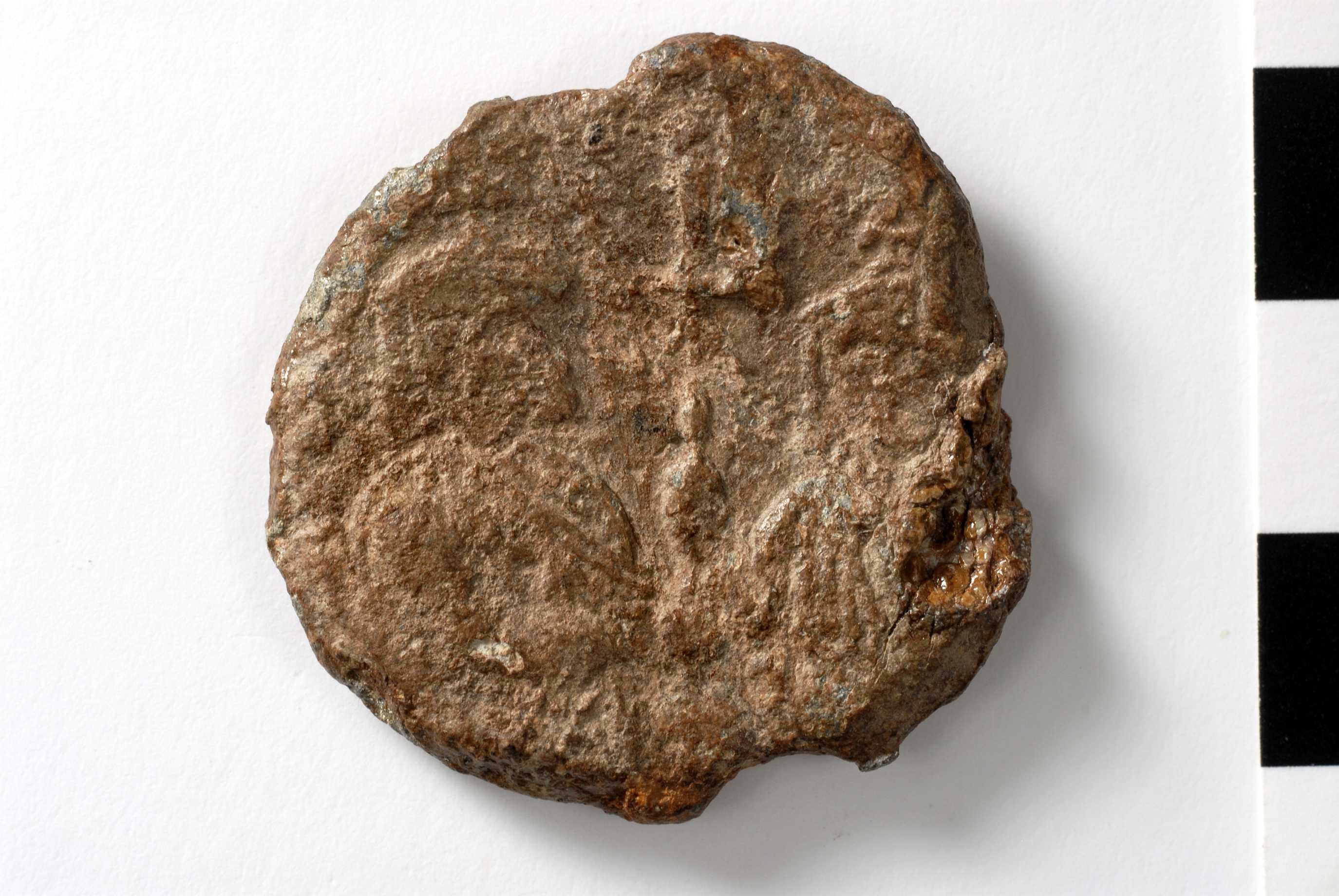The imperial kommerkia of Mesembria (732/3)
Obverse
Half-length images of Leo III (left), bearded, and Constantine V, beardless, holding between them a cross set on globus; both wear chlamys and crown with a cross. No visible border.
Obverse
Half-length images of Leo III (left), bearded, and Constantine V, beardless, holding between them a cross set on globus; both wear chlamys and crown with a cross. No visible border.
Reverse
Inscription of six lines. No visible border.
των
βασιλικ
ωνκομμε
.κιωνμεσ
ημβριασ
α
Τῶν βασιλικῶν κομμερκίων Μεσημβρίας. Ἰνδικτιὼν αˊ
| Accession number | BZS.1955.1.4398 |
|---|---|
| Diameter | 32.0 mm |
| Previous Editions | DO Seals 1, no. 77.6. |
Translation
Τῶν βασιλικῶν κομμερκίων Μεσημβρίας. Ἰνδικτιὼν αˊ.
(Seal of) the imperial kommerkia of Mesembria. Indiction 1.
Bibliography
- Catalogue of the Byzantine Seals at Dumbarton Oaks and at the Fogg Museum of Art, Vol. 1: Italy, North of the Balkans, North of the Black Sea (Open in Zotero)
- Byzantine Lead Seals, Vol. 1 (Open in Zotero)
- Byzantine Lead Seals, Vol. 2 (Open in Zotero)
- Tribute or Trade?: The Byzantine-Bulgarian Treaty of 716 (Open in Zotero)
- Mesembria in the Ninth Century: Epigraphical Evidence (Open in Zotero)
- Sceaux byzantins du musée de Constantinople (Open in Zotero)
- Ἡ συνέχεια τῆς Χρονογραφίας τοῦ Ἰωάννου Σκυλίτση (Open in Zotero)
- La Thrace Orientale et La Mer Noire: Géographie Ecclésiastique et Prosopographie (VIIIe-XIIe Siècles) (Open in Zotero)

Commentary
In line 4, Zacos-Veglery read an Ε instead of Β, which would give Μεσημερίας, but we think that this is a round beta broken on its side, and should be read as Β.
For this seal, we follow the classification of Zacos-Veglery, the principles of which are explained ibid., I, 301-3. The two emperors of the obverse are identified as Leo III and Constantine V. In the period of their join reign, after the declaration of Iconoclasm, that is, in 730-741, Constantine V is represented beardless and smaller than his father; during his sole reign (between 741 and the coronation of his son Leo IV in 751), Constantine is still represented together with his father in the same posture but is now bearded and of equal height.